11 Ways to Accidentally Kill Your Chickens: Tips to Keep Your Flock Safe
- June 17, 2024
- 0 comment
Raising chickens can be rewarding but also challenging if you’re not prepared. Over the years, many enthusiastic beginners have jumped into chicken keeping without proper research, leading to tragic mistakes. Here are eleven common ways chickens are accidentally harmed, along with tips to prevent these unfortunate incidents.
1. Chicken Coop Fires
Raising chickens, particularly the young ones, requires vigilant attention to safety, especially concerning heat sources in the coop. One of the foremost dangers is a fire caused by improperly secured heat lamps. To enhance safety, it’s crucial to ensure that heat lamps are securely fastened. A more stable and secure method involves using a double-wire system, which adds a layer of safety by ensuring that if one wire fails, the other can prevent the lamp from falling. Always use a heat lamp with a sturdy chain or zip ties for extra security, and avoid using the flimsy clamp attachments that sometimes come with these lamps.
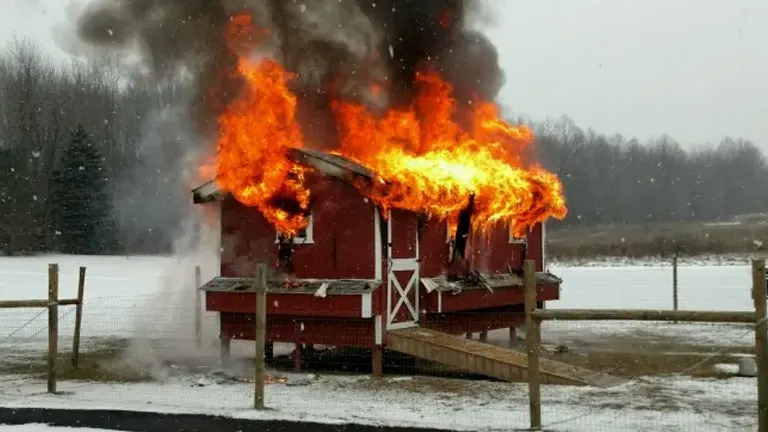
Additionally, positioning the lamp correctly is vital to avoid overheating or potential burns. It should be hung at a safe distance above the chickens—typically 18-24 inches depending on the temperature needs of your region and the age of your birds. Make sure the lamp is away from any flammable materials to prevent fires. A useful alternative to heat lamps, which can provide warmth without the high risk of fires, is heating plates. These devices offer a safer heat source, significantly reducing the risk of accidents in the coop.
2. Family Pets
To minimize the risk between family pets, particularly dogs, and your chickens, it’s vital to introduce them carefully and ensure that your coop is secure. Start by allowing your chicks to settle in their new environment for a few days before introducing your dog. Begin the introductions with your dog on a leash to maintain control, allowing the dog to get used to the chicks from a safe distance. Reward calm behavior with treats to reinforce good conduct.
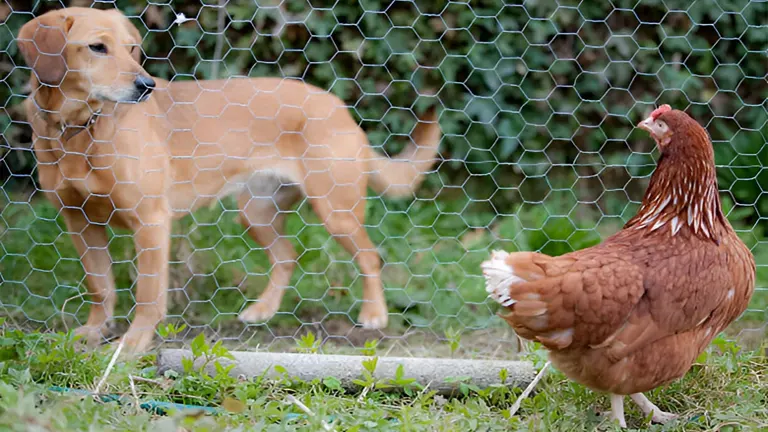
For outdoor introductions, once your chicks are older and moving to their coop, continue with controlled interactions. Keep your dog on a leash and gradually decrease the distance to the coop over several days, rewarding your dog for calm behavior. This helps establish that the backyard, previously the dog’s domain, is now a shared space. As your dog shows appropriate behavior, you can gradually give more freedom during these supervised interactions.
3. Lack of Security
To keep your chickens safe from predators, it’s crucial to prioritize coop security. Predators, including raccoons, foxes, bears, and even neighborhood dogs, can easily compromise weak points in chicken coops. Using sturdy materials such as hardware cloth, which is more robust than traditional chicken wire, is recommended because it can withstand attacks from these predators. Hardware cloth has smaller mesh sizes that not only prevent predators from entering but also stop smaller pests like rats and snakes.
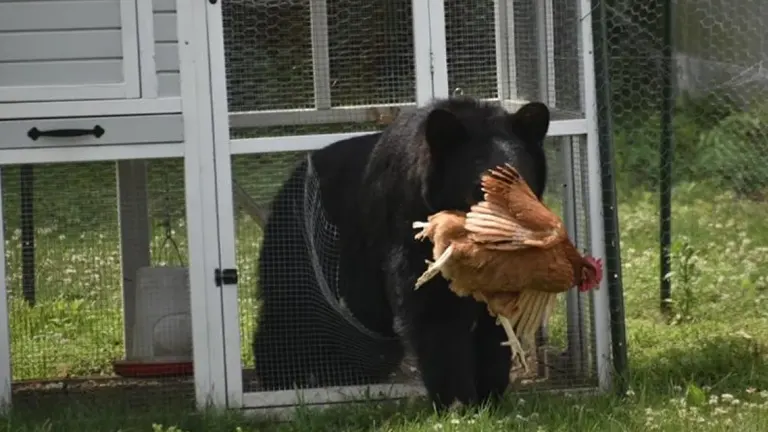
Furthermore, securing the coop with complex locking mechanisms is essential. Raccoons are particularly adept at opening simple latches and hooks. Carabiners, padlocks, or locks that require opposable thumbs to operate are effective deterrents. It’s also advisable to regularly inspect the coop for any signs of tampering or attempted break-ins, ensuring the coop remains impenetrable.
4. Poison
Using rat poison or other rodenticides near chickens requires careful consideration to avoid accidental poisoning. Chickens might ingest poisoned rodents, leading to severe illness or death. To manage this risk effectively, it is advisable to use enclosed bait stations that prevent chickens from accessing the poison. These stations allow rodents to enter and consume the poison but keep it contained so that chickens cannot reach it.
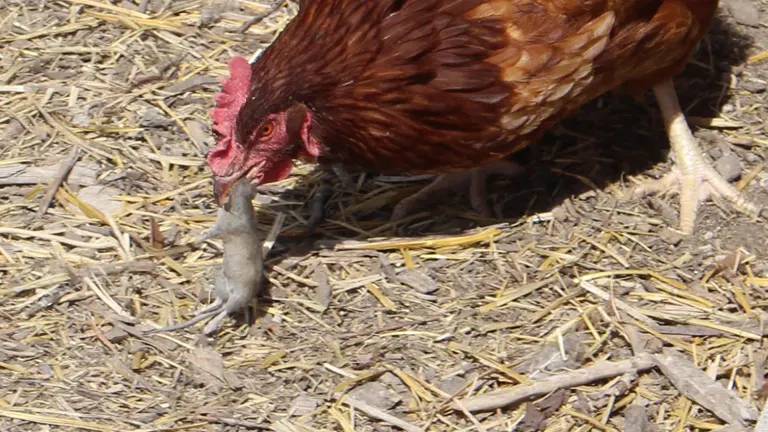
Regular monitoring of the areas around your coop for dead rodents is also crucial. This practice helps in promptly removing any potential sources of secondary poisoning to your chickens. Additionally, consider alternative pest control methods, such as traps or natural predators, which reduce the need for chemical rodenticides and provide a safer environment for your poultry.
5. Chemicals
To protect your chickens from accidental poisoning, it’s vital to ensure that all hazardous chemicals such as gasoline, antifreeze, and cleaners are stored securely and out of reach. Chickens are known for their curious nature and might peck at containers or spills, mistaking these dangerous substances for food. Proper storage involves placing chemicals in locked cabinets or high shelves away from areas where chickens roam. This precaution not only prevents poisoning but also maintains a safer environment for both your flock and your family.
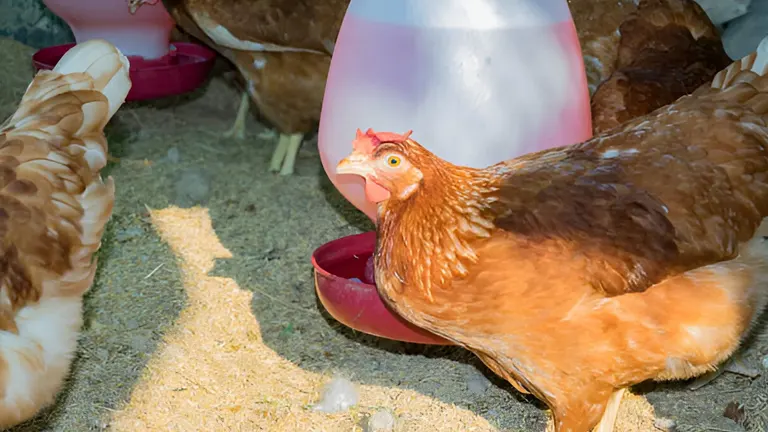
Regularly inspect your storage areas for leaks or breaches in containers. If chemicals must be used near the chicken coop, for instance during maintenance or cleaning tasks, make sure to thoroughly clean up any residue immediately and keep chickens away from the area until it is safe. Implementing these practices ensures that your chickens are protected from the risks associated with accidental chemical exposure, thereby promoting a healthier and safer living space for your poultry.
6. Dangerous Debris
When managing debris around your chicken coop, it’s crucial to keep a clean and safe environment to prevent your chickens from encountering dangerous materials. Items like glass, wires, and nails can be extremely harmful if left in areas accessible to your chickens. Ensuring these materials are promptly and securely disposed of reduces the risk of injuries or death from ingestion or accidents.
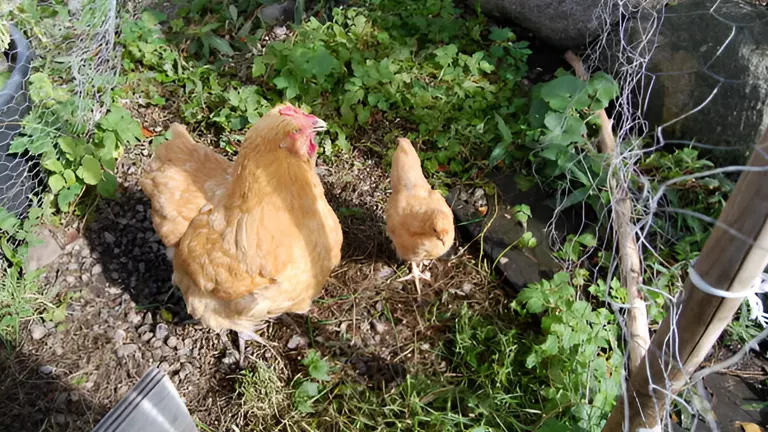
To further safeguard your chickens, consider implementing additional protective measures. Use strong, well-attached wire mesh instead of simple chicken wire to fortify the coop, which helps keep out small predators that might pry open weaker enclosures. Also, make it a routine to clean the area around your chicken coop regularly. Remove potential hazards and ensure no harmful debris is left within reach of your chickens. This not only keeps the area tidy but also minimizes the chances of your chickens stumbling upon something dangerous.
7. Dehydration
Ensuring that your chickens always have access to fresh water is essential, especially during the warmer months. Each chicken can drink roughly a pint of water each day, so it’s vital to provide ample and accessible water sources. This helps to prevent dehydration, a serious threat that can affect their health and egg production significantly.
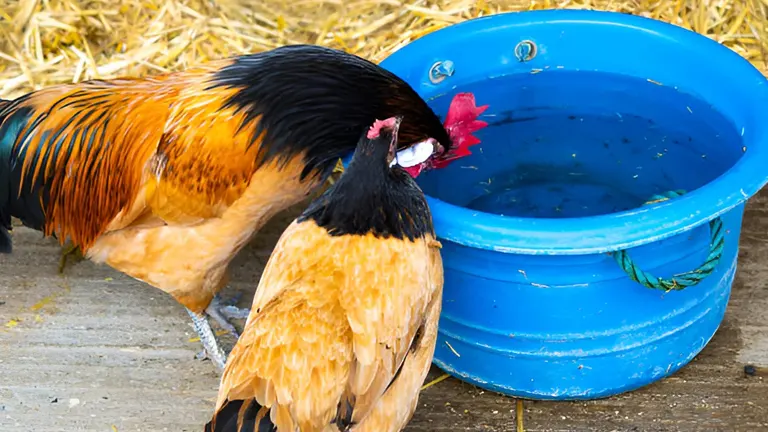
To guarantee that every chicken, even those lower in the pecking order, gets enough water, set up multiple drinking stations around your coop and run. Positioning these water sources strategically ensures that all chickens can drink without being blocked or bullied by others. Regular checks and maintenance of these water stations are also crucial to keep the water clean and fresh, and to ensure that there are no leaks or blockages.
8. Hazardous Foods
Feeding your chickens can be a delightful part of their care, but it’s crucial to know that some foods can be harmful to them. Avoid giving your chickens chocolate, caffeine, alcohol, raw beans, moldy food, avocados, or salty snacks, as these can be toxic. Foods like apple seeds and potato skins, which belong to the nightshade family, can also be dangerous and should be given with caution.
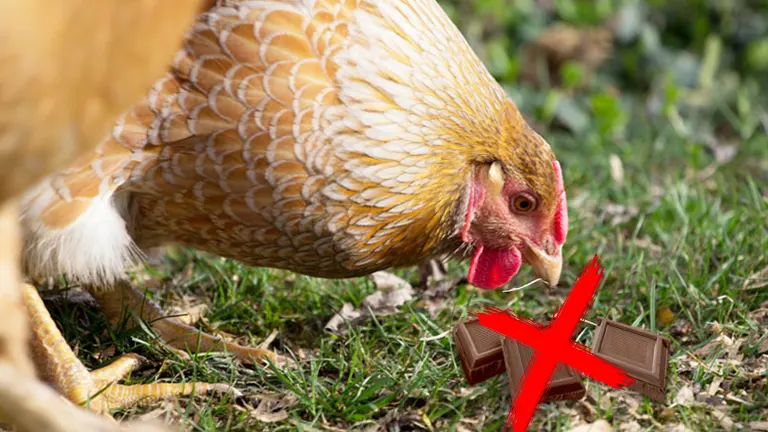
When treating your chickens, it’s important to ensure that all food items are safe and healthy. Stick to their regular feed and safe, nutritious treats like vegetables and fruits that are known to be safe for chickens. This will help keep your flock healthy and prevent any accidental poisoning from hazardous foods. Always check and double-check the safety of any treats you offer to your chickens to maintain their health and happiness.
9. Neglect
Chickens, though they might seem easy to care for, require regular attention and proper nutrition to stay healthy. Neglecting these needs can lead to poor health, distress, and reduced egg production. Ensuring your chickens have adequate feed, clean water, and a safe environment is crucial for their well-being. Proper chicken care involves more than just feeding; it includes regular health checks and maintaining a clean living space.
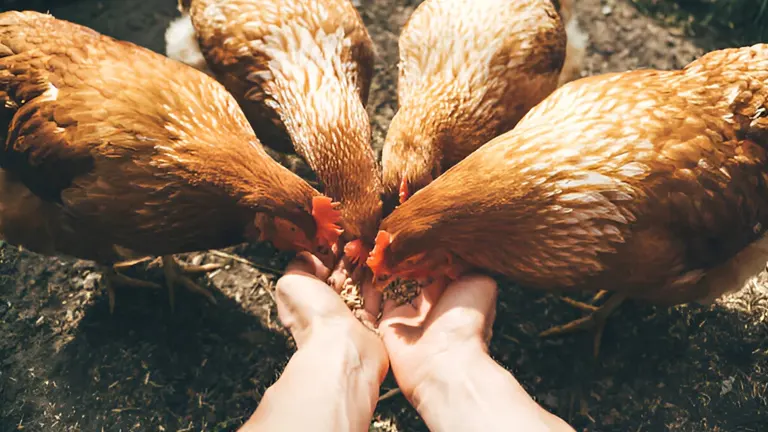
Coop cleaning should ideally be done weekly or bi-weekly, which involves removing old bedding, cleaning nesting boxes, and ensuring the coop is free from pests like mites by using appropriate treatments. Additionally, chickens need mental and physical stimulation. This can be provided through environmental enrichments like mirrors, perches, dust baths, and varied feeding methods such as food dispensers made from PVC pipes, which encourage natural foraging behavior.
10. Toxic Plants
When chickens roam freely, they enjoy a natural environment, which is beneficial for their well-being. However, this freedom comes with risks, particularly from toxic plants that may be present in your garden. To keep your chickens safe, it’s crucial to ensure that your outdoor spaces are free from plants that are harmful to them, such as foxglove, lobelia, and rhubarb leaves, which can be detrimental to their health.

Before allowing your chickens to graze in any area, conduct a thorough survey of the plants present. Remove any that are known to be toxic to poultry. For added safety, consider planting chicken-friendly vegetation that they can eat without harm. By carefully selecting and managing the plants in your chicken’s environment, you can prevent accidental poisoning and create a safer, healthier space for your flock to explore.
11. Excessive Use of Diatomaceous Earth
Diatomaceous earth (DE) is a popular natural solution for pest control in chicken coops due to its ability to eliminate insects without the use of chemicals. However, excessive use of DE can be harmful to chickens, potentially causing respiratory problems. It’s essential to apply DE with caution, ensuring that it is lightly sprinkled in areas where chickens frequent, and to avoid creating dust clouds that chickens could inhale.
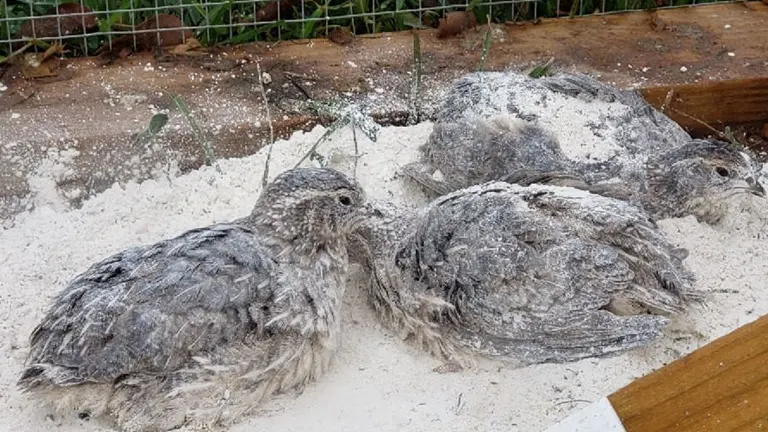
To use DE safely, focus on applying it in specific areas where pests are problematic and in moderate quantities. It can be mixed with sand or another substrate to reduce airborne particles. This method helps maintain the effectiveness of DE in controlling pests while minimizing the risk to your chickens’ respiratory health. Being cautious with its application ensures that your coop remains a safe and healthy environment for your flock.
Conclusion
Raising chickens responsibly involves more than just providing food and water. It requires a commitment to creating a safe and healthy environment. By being aware of these common mistakes and actively working to prevent them, you can ensure a thriving and productive flock. For further guidance on raising chickens through the winter or addressing specific health concerns, refer to comprehensive guides and resources available to poultry enthusiasts.
FAQs
- How often should I check my chicken coop for safety hazards?
It’s a good practice to inspect your chicken coop weekly. Look for potential risks like loose wires, sharp edges, or signs of predator attempts to breach the coop. - Can chickens stay warm without a heat lamp in winter?
Adult chickens are quite hardy and can maintain their body heat if the coop is well-insulated and free from drafts. Heat lamps are generally not necessary unless you have very harsh winter conditions or particularly vulnerable breeds. - What are some safe alternatives to using rat poison around chickens?
Consider using live traps or enclosed bait stations that chickens cannot access. Always remove captured rodents promptly to prevent chickens from pecking at potentially poisoned bodies. - How do I prevent my dog from harming my chickens?
Gradual and supervised introduction is key, along with consistent training to reinforce that chickens are not prey. For some dogs, especially those with strong hunting instincts, it may be necessary to keep them separated from the chickens. - What should I do if I suspect my chickens have ingested something toxic?
Immediately isolate the affected chicken(s) and consult a veterinarian. Provide details about what they might have ingested to help the vet determine the best course of action. - Are there any common household foods I should avoid feeding my chickens?
Yes, avoid feeding chocolate, caffeine, alcohol, raw beans, moldy or spoiled foods, and salty items. Also, be cautious with the pits and seeds of fruits, as they can contain toxins. - What is the safest way to introduce new plants into the area where chickens roam?
Research each plant to ensure it’s not toxic to poultry. Always monitor chickens when they first have access to new plants since they may try anything once. - How can I safely use diatomaceous earth around my chickens?
Apply diatomaceous earth in a way that minimizes airborne dust, such as mixing it with sand or soil in the bathing areas. Avoid using it excessively in areas where chickens cannot avoid it. - What’s the best way to handle water supply for my chickens in hot weather?
Ensure that there are multiple water stations that cannot be monopolized by higher-ranking chickens. Consider placing shaded water stations throughout the area to encourage drinking and reduce overheating. - How can I ensure that my chickens have enough space on their roost?
Provide at least 10 inches of roosting space per chicken. If possible, design the roost to accommodate more space than the minimum to prevent pecking and overcrowding.
We hope this guide helps you avoid common pitfalls in chicken care! Got more tips or questions? Don’t hesitate to share your thoughts in the comments below. Your experiences could help fellow chicken enthusiasts too! Let’s keep the conversation clucking!

Edward Smith
Forestry AuthorWoodworking is about more than crafting; it's a harmonious connection with nature, mastering tools, and preserving our environment. I'm here to share my knowledge and experiences with you, forging a future where we can embrace wood's beauty and utility while safeguarding our forests' health and diversity.






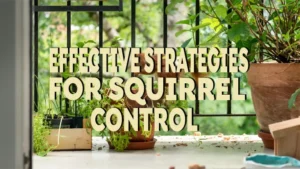






Leave your comment